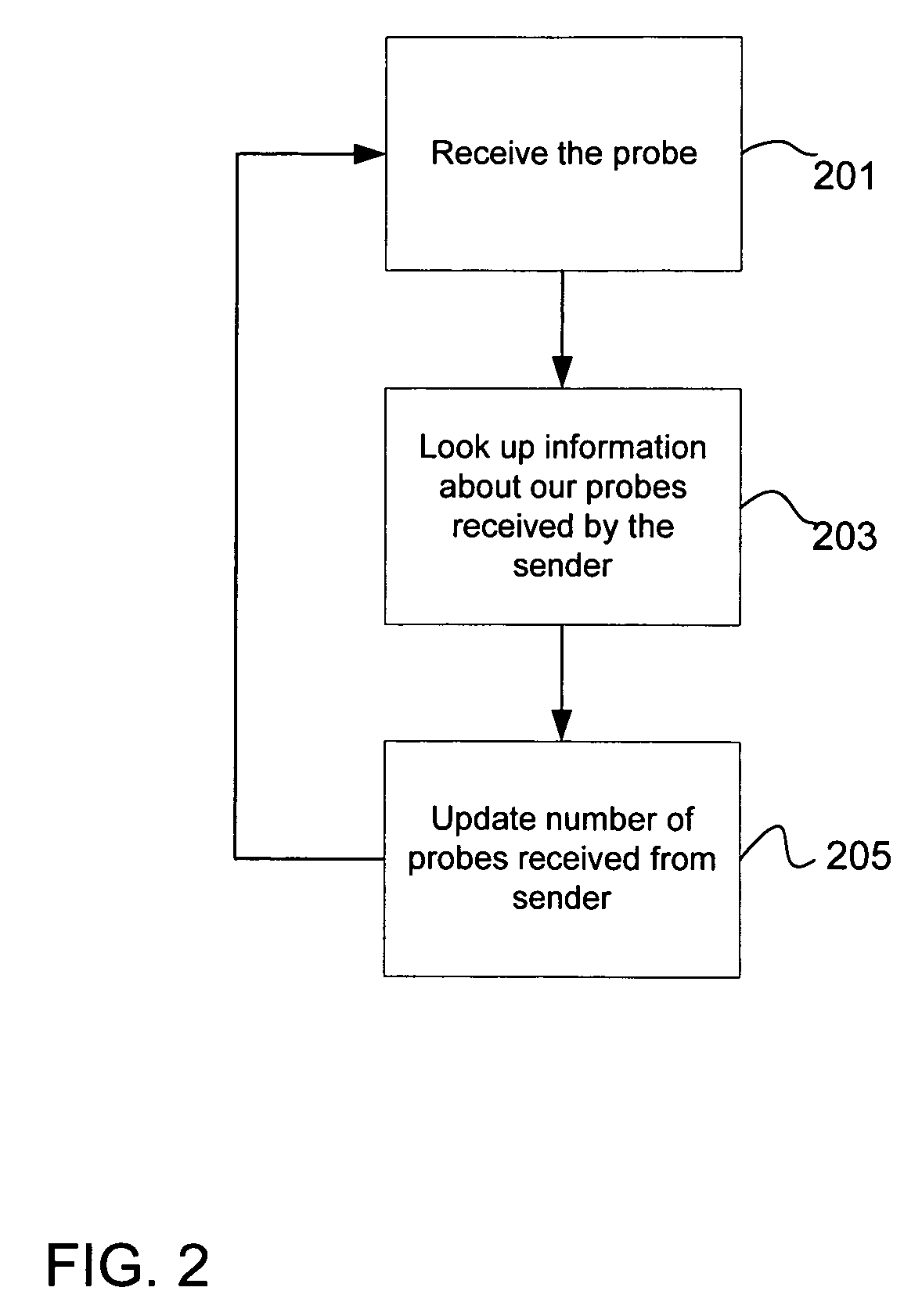System and method for link quality routing using a weighted cumulative expected transmission time metric
a transmission time and metric technology, applied in the field of computer networks, can solve the problems of stalling the flow of packets, suboptimal network capacity, and special challenges of multi-hop ad hoc routing, and achieve the effect of measuring the link quality of a rou
- Summary
- Abstract
- Description
- Claims
- Application Information
AI Technical Summary
Benefits of technology
Problems solved by technology
Method used
Image
Examples
Embodiment Construction
[0021] In the following description, certain embodiments of the present invention will be presented. For purposes of explanation, specific configurations and details are set forth in order to provide a thorough understanding of the embodiments. However, it will also be apparent to one having skill in the art that the present invention may be practiced without the specific details. Furthermore, well-known features may be omitted or simplified in order not to obscure the embodiment being described.
[0022] Embodiments of the invention include a new routing metric, Weighted Cumulative Expected Transmission Time (WCETT), for selecting a high-throughput path between a source node and a destination node in a multi-hop network. Although it is not limited thus, the metric is especially advantageous in wireless networks in which at least some nodes are equipped with multiple heterogeneous radios, and in which some links interfere with one another. The WCETT metric enables the selection of cha...
PUM
 Login to View More
Login to View More Abstract
Description
Claims
Application Information
 Login to View More
Login to View More - R&D
- Intellectual Property
- Life Sciences
- Materials
- Tech Scout
- Unparalleled Data Quality
- Higher Quality Content
- 60% Fewer Hallucinations
Browse by: Latest US Patents, China's latest patents, Technical Efficacy Thesaurus, Application Domain, Technology Topic, Popular Technical Reports.
© 2025 PatSnap. All rights reserved.Legal|Privacy policy|Modern Slavery Act Transparency Statement|Sitemap|About US| Contact US: help@patsnap.com



